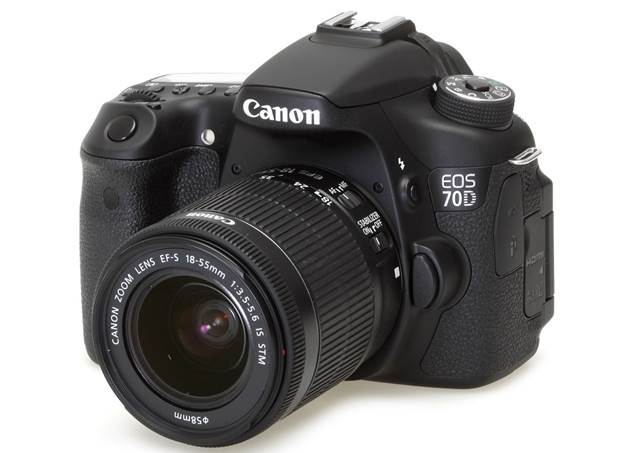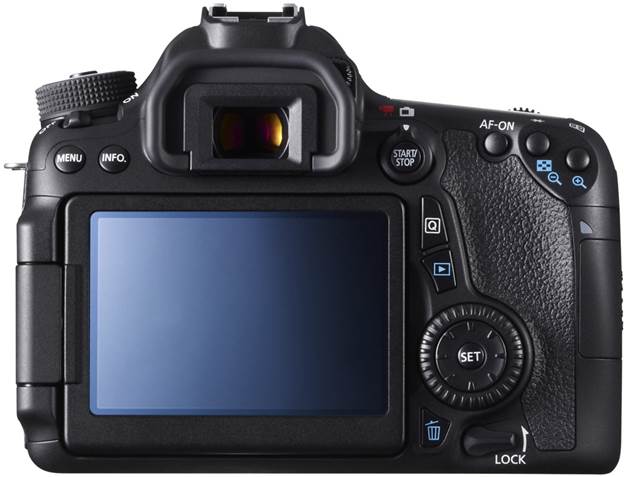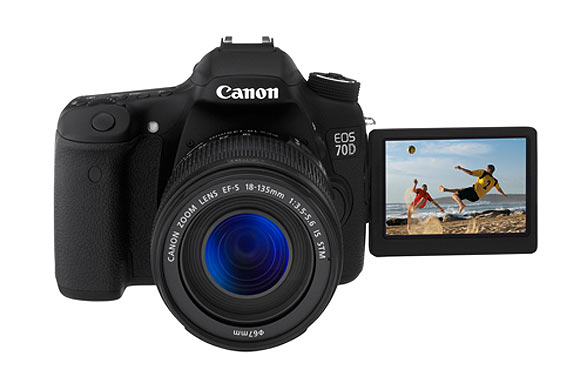Canon once again creates a DSLR with plenty of features
that will make both enthusiasts and newbie photographers very happy
Canon’s EOS
60D may be a little over three years old now but it is still highly regarded as
one of the best mid-range SLRs for enthusiasts due to its ability to produce
stunning images and myriad of features. However, for those who are looking to
get upgrade their aging shooter to one with newer features and technology, then
the EOS70D is the natural way to go as it outdoes its predecessor in many ways.

Canon
EOS 70D
If you’ve
seen or used the EOS 60D before, then you will be very familiar with the 70D as
it looks very much the same to the 60D but upon closer inspection you will
notice that it is smaller by just a very little bit and has had some changes
done to it. While it isn’t made out of metal like some of its competition, the
70D is still very solid and can take a few bumps. We had it with us during our
recent trip to Japan and even in the cold weather of 4-degrees Celsius, the 70D
held up very nicely.

Much
like its predecessor, the controls on the back of the 70D are located very strategically
and easy to get to even when you have your eye on the viewfinder
Much of the
button layout on the top and back of the 70D is reminiscent of the 60D and
that’s a really good thing as we always found that they were very easy to get
to even when we had our eye on the viewfinder. There are some minor changes and
additional buttons here and there but at the end of the day, it won’t take too
long for an experienced or even amateur photographer to get familiar with where
the buttons are situated.
Seeing as
this is a mid-range DSLR, it actually produced very impressive images as they
had very natural colours with a good balance of saturation and contrast and
also retained plenty of details in both bright and low light conditions. There
was hardly any chromatic aberration even when we zoomed in really closely to
our photos. Furthermore, with its Dual Pixel CMOS AF technology, photographers
are able to easily capture fast moving subjects and yet still come out with
great quality shots.

Canon
EOS 70D
Speaking of
the Dual Pixel CMOS AF technology, those who love recording videos will also
love the 70D as it has easily the fastest continuous focus to-date that
improves focusing tremendously in live view and movie mode.
For
photographers and Canon fans who have been waiting for a successor to the
well-loved EOS 60D, the EOS 70D is definitely a worthy one as it retains much
of what was loved in its predecessor but has new and improved features such as
the Dual Pixel CMOS AF technology that puts it in a league of its own.
Specifications ·
Lens Mount:
Canon EF Mount ·
Image Processor:
DIGIC 5+ ·
Effective
Pixels: Approx. 20.20-megapixels ·
ISO: ISO 100 –
12800 (Standard) ·
Built-in Flash:
Retractable, Auto Pop-up Flash ·
LCD Monitor:
3-inch Capacitive Clear View II TFT LCD ·
Storage Type: SD
/ SDHC / SDXC (UHS-I) ·
Connectivity:
USB 2.0, mini HDMI, Remote Control Terminal (RS-60E3), Built-in Wireless,
Wireless Remote Control (RC-6 Compatible), Eye-Fi, 3.5mm stereo microphone-in ·
Dimensions:
139.0 x 104.3 x 78.5mm ·
Weight: 675g
(Body Only)
|